Bengaluru: When Chewang Norphel was growing up in Ladakh, it used to snow heavily in June. Today, at 88, he hasn’t seen June snowfall in years. This winter was a wake-up call when snow arrived only after mid-January. As melting glaciers and decreasing snowfall threaten the agrarian economy and livestock farming, Ladakh is future-proofing itself against climate change.
Engineers are considering spraying the tops of natural glaciers with snow to mitigate black soot that accelerates melting. Innovator and engineer Sonam Wangchuk has started using discarded plastic bottles for insulation instead of cement or mortar. Engineers are increasingly switching to local materials like wood and earth, citing the resilience of centuries-old seismic-proof structures compared to crumbling cement homes.
Key to Ladakh’s climate-resilient future is building and maintaining artificial glaciers such as ice stupas. More than 30 years ago, Norphel created an artificial glacier at 4000 m. In 2013, Wangchuk developed ice-stupas resembling Buddhist monasteries; they melt during arid months to irrigate fields. Since then, many small villages in Ladakh have been resuscitated. Now, engineers in Ladakh collaborate with teams in the Andes and Switzerland, building artificial ice structures and stupas.
But as the atmosphere warms, these reservoirs struggle to endure. The urgency has mobilised communities, organisations, and researchers to actively protect water storage for the critical dry months of April to June before glaciers begin to thaw again in the summer.
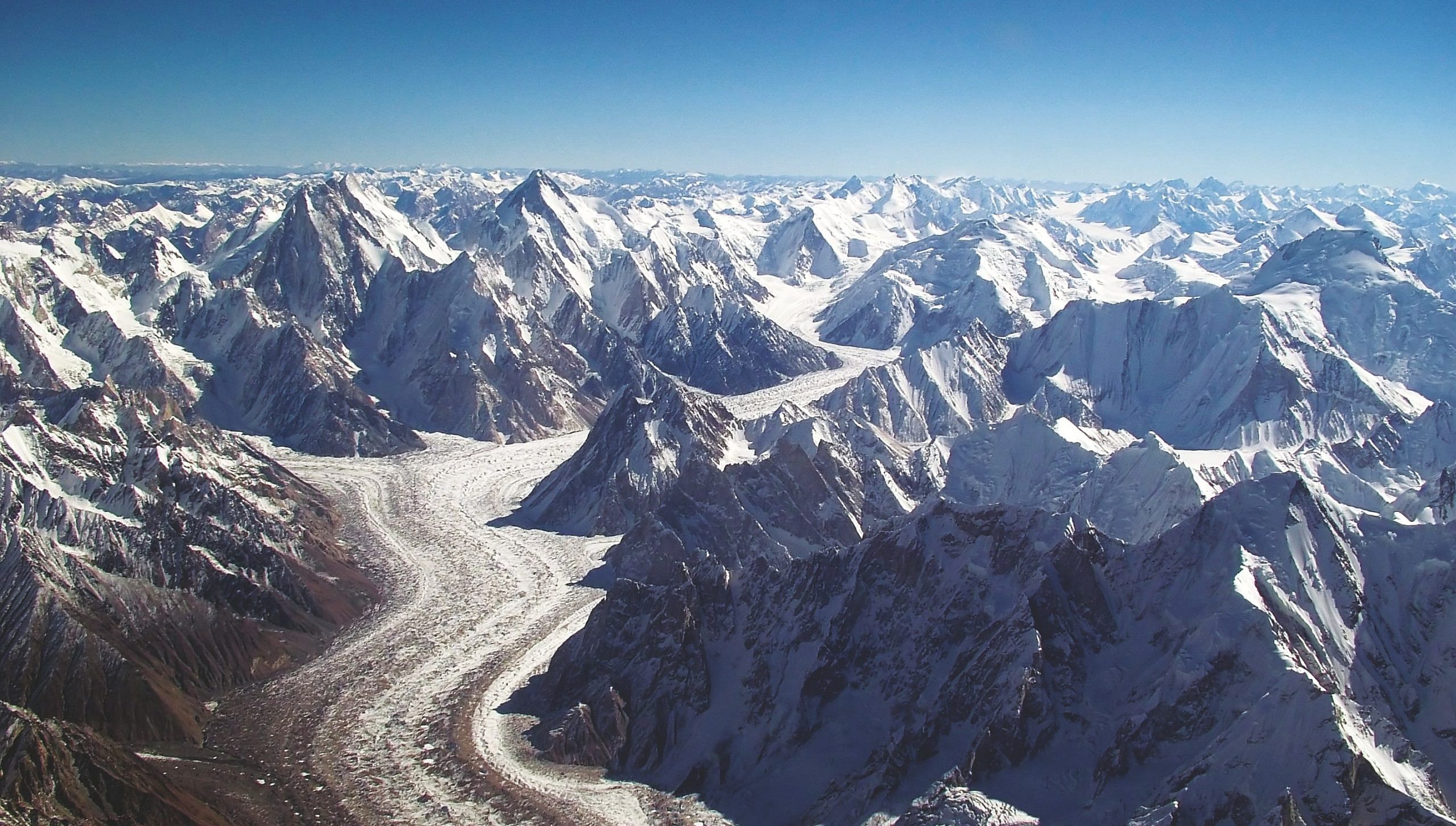
The same innovators spearheading frozen reservoirs in the 1990s now leverage decades of experience for efficient, sustainable water management as temperatures rise.
“Communities like Ladakh feel the impact of climate change years and decades before big cities do,” says Nishant Tiku, 32, Ice Stupa Project director, an initiative by Wangchuk’s NGO, Students’ Educational and Cultural Movement of Ladakh.
“All this consumption does have an impact, and we see it here first-hand immediately.”
From glaciers to stupas
When he was studying Ladakh’s glaciers, Norphel noticed small diversions where trickling water could freeze naturally. “When we have so much ice in the winter, why can’t we come up with a system to conserve it?” he said.
His solution was artificial glaciers—like slabs of ice held by rocks. As water slowly trickles down beginning November, it starts to freeze. By March, giant, solid ice blocks have formed that start to melt around April while the water flowing downstream remains frozen up in the snow cap.
Norphel is credited with ushering in the era of artificial glaciers. The “Ice Man of India” joined the Leh Nutrition Project (LNP) under the central Watershed Development Programme in the 1990s, and built several artificial glaciers.
Norphel explained that artificial glaciers act like a temporary source in April-May, when the sowing season begins, until the river starts flowing again in full force in June.
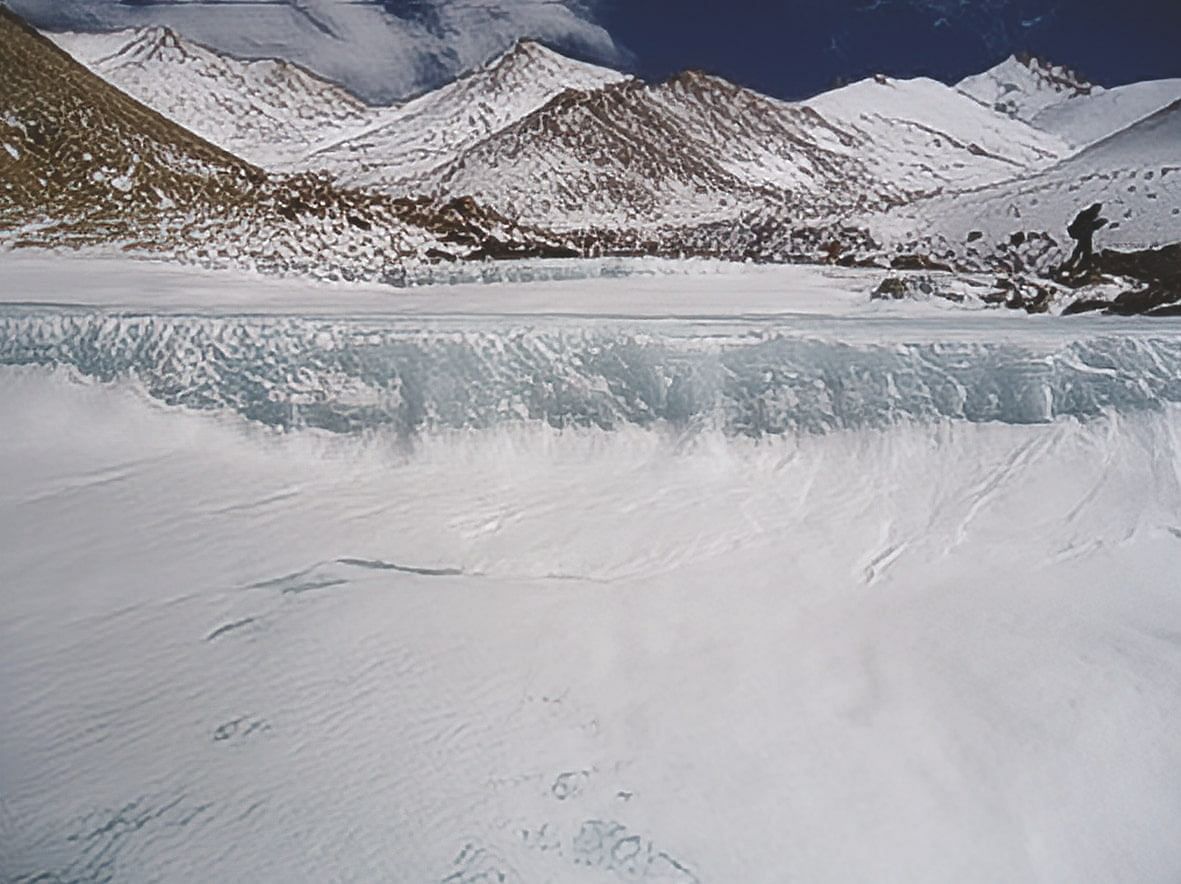
But artificial glaciers are based on horizontal ice formation, and need high altitude locations — above 4,000 metres—making them difficult to maintain. Wangchuk solved this problem through ice stupas by freezing stream water vertically. Around 30-50 metres high, they look like cones and can be built wherever water is needed. Many of them drain into a naturally flowing stream that has temporarily dried up, while some supply water to tanks.
The popular innovation led to the Ice Stupa Project in 2014, launched under Students’ Educational and Cultural Movement of Ladakh (SECMOL). The project has engaged 24 villages in Ladakh, including eight in Kargil, to build over 67 million litres of ice capacity.
“Artificial structures like ice stupas are easy to construct and can be quickly adopted by anyone,” explained project director Tiku, adding that most of the work is undertaken by the NGO sector with the involvement of villagers.
Ice stupas are built by assembling a conical structure made of earth, rope, and grass, while water from a stream or spring is fed into the stupa through a pipe, either from below (fountain-style) or the top (sprinkler-style). This allows a tiny ice mountain to form underneath.
“You can let a stupa fully build and freeze, and then place a pipe and build another one over it,” explained Tiku. “Geodesic domes with local materials like poplar and willow are used, and water is sprinkled on them. Once the freezing process begins, we place the pipe above.”
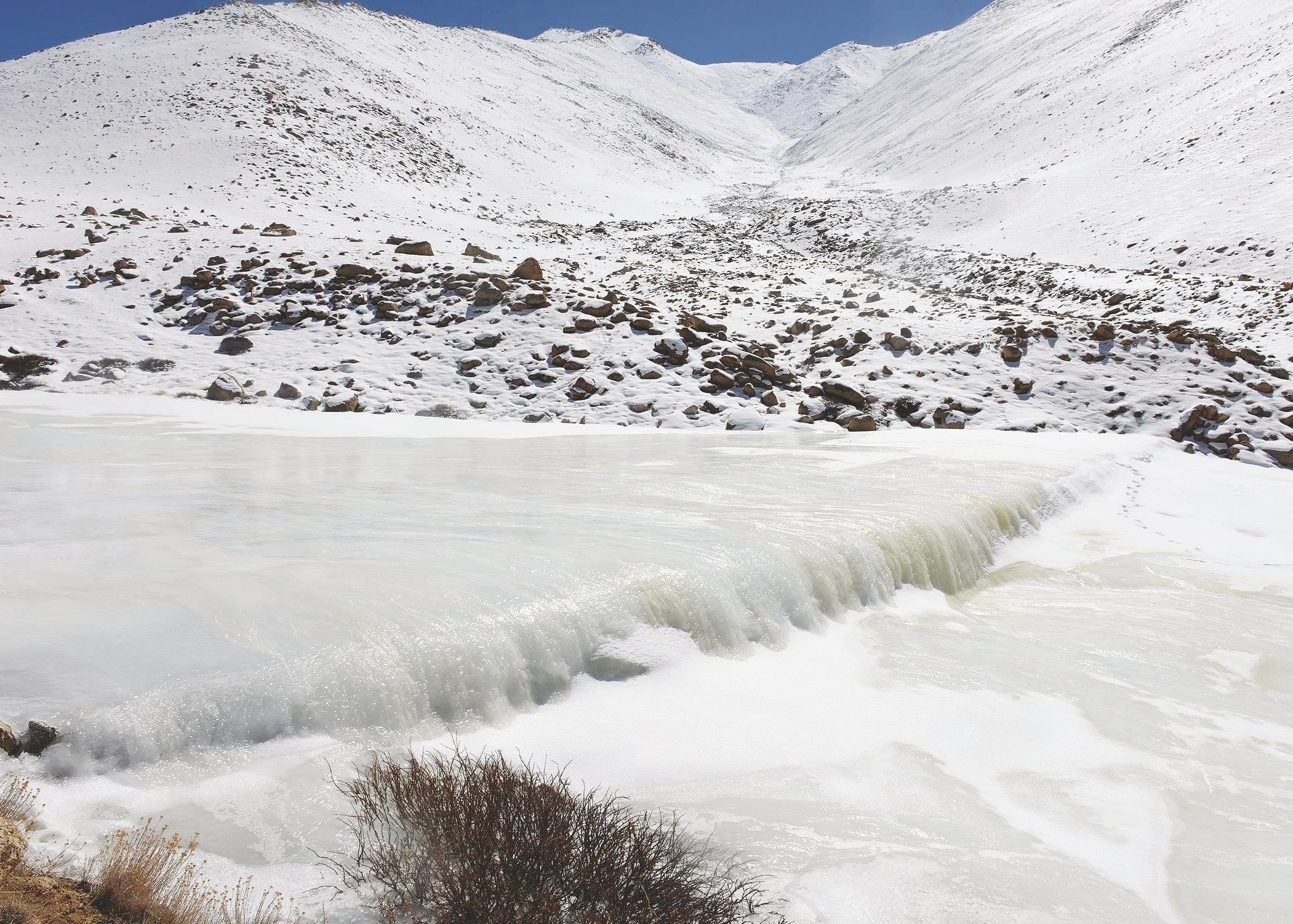
“Understanding the geography and topography in a region is very important,” said Chhotak Gyatso, the executive director of LNP. He has been engaged in building artificial ice structures for nearly two decades along the side of the Indus River that has started to become deficient in rainfall.
Many of these regions have also started to adopt cash crops, which need to be harvested at the right time and thus require water in spring.
Data collection tracking ice flow, water flow, ice accumulation, and related metrics has allowed quantitative evaluation of these ice reservoirs’ effectiveness. Analysis consistently demonstrates increased water availability in correlation with reservoir usage
“We have received consistent feedback that artificial glaciers have been very helpful to villagers, and especially farmers, and this helps sustain the economy as well,” said Gyatso.
Building reservoirs
Despite widespread adoption, building artificial ice reservoirs comes with its set of problems.
“There isn’t enough data yet. We have just recently started tracking the quantity of water and ice,” said Gyatso. “And the problem is that you have to often rebuild the structure every year, which could take a month and is laborious.”
Research is key in building these frozen storage structures. Community needs are surveyed and villagers are trained. There are five types of ice reservoirs in use today in the Ladakh region — basin, cascade, diversion, ice stupa, and ice mountains or ice fall.
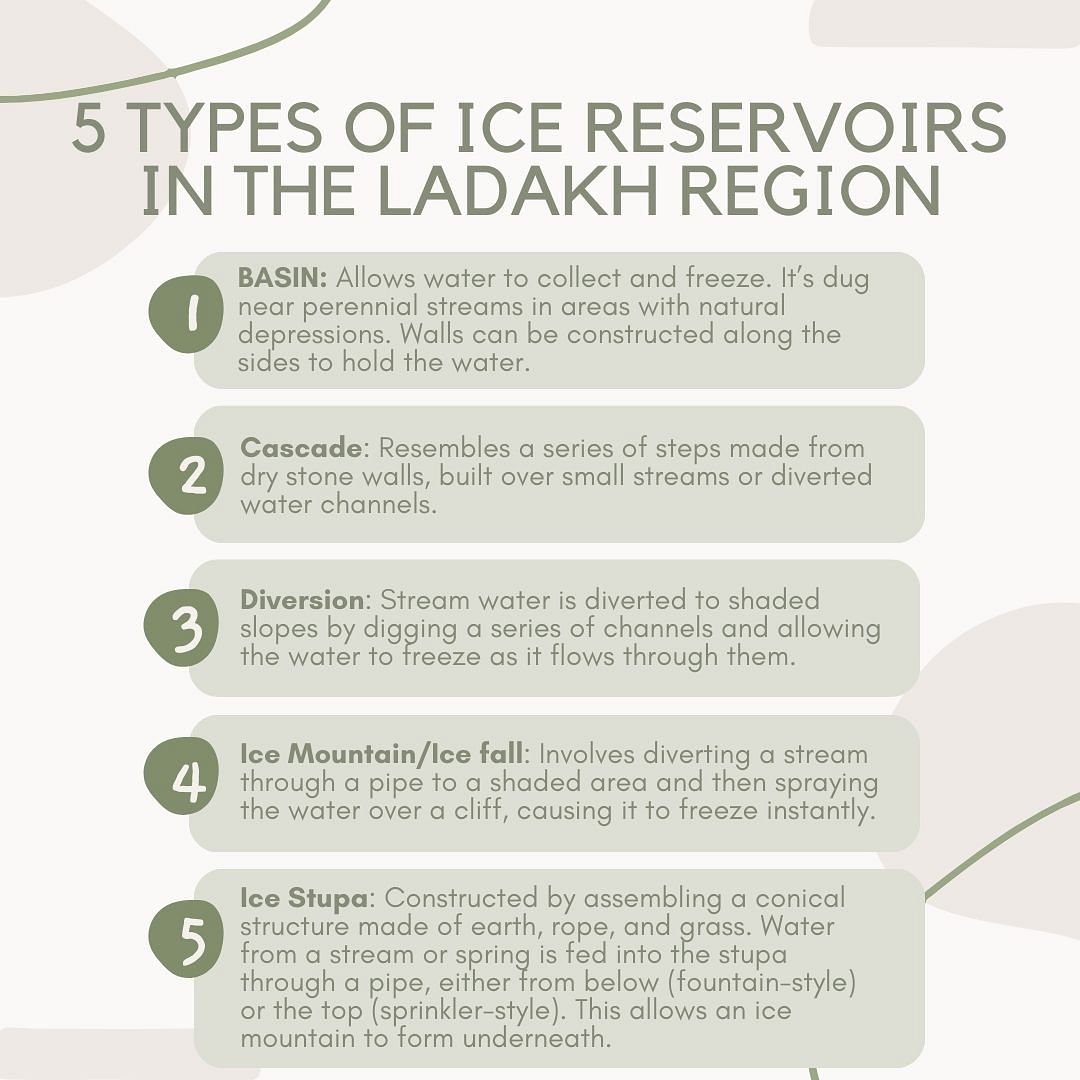
Basin types (traditionally referred to as ‘ice reservoirs’) simply allow water to collect and freeze. They are dug near perennial streams in areas with natural depressions. Walls can be constructed along the sides to hold the water. On the other hand, the cascades resemble a series of steps made from dry stone walls, built over small streams or diverted water channels. In a diversion reservoir, stream water is diverted to slopes or shady areas away from the sun by digging a series of channels and allowing the water to freeze, resembling frozen pipes of ice. Cascade and diversion types are typically used together.
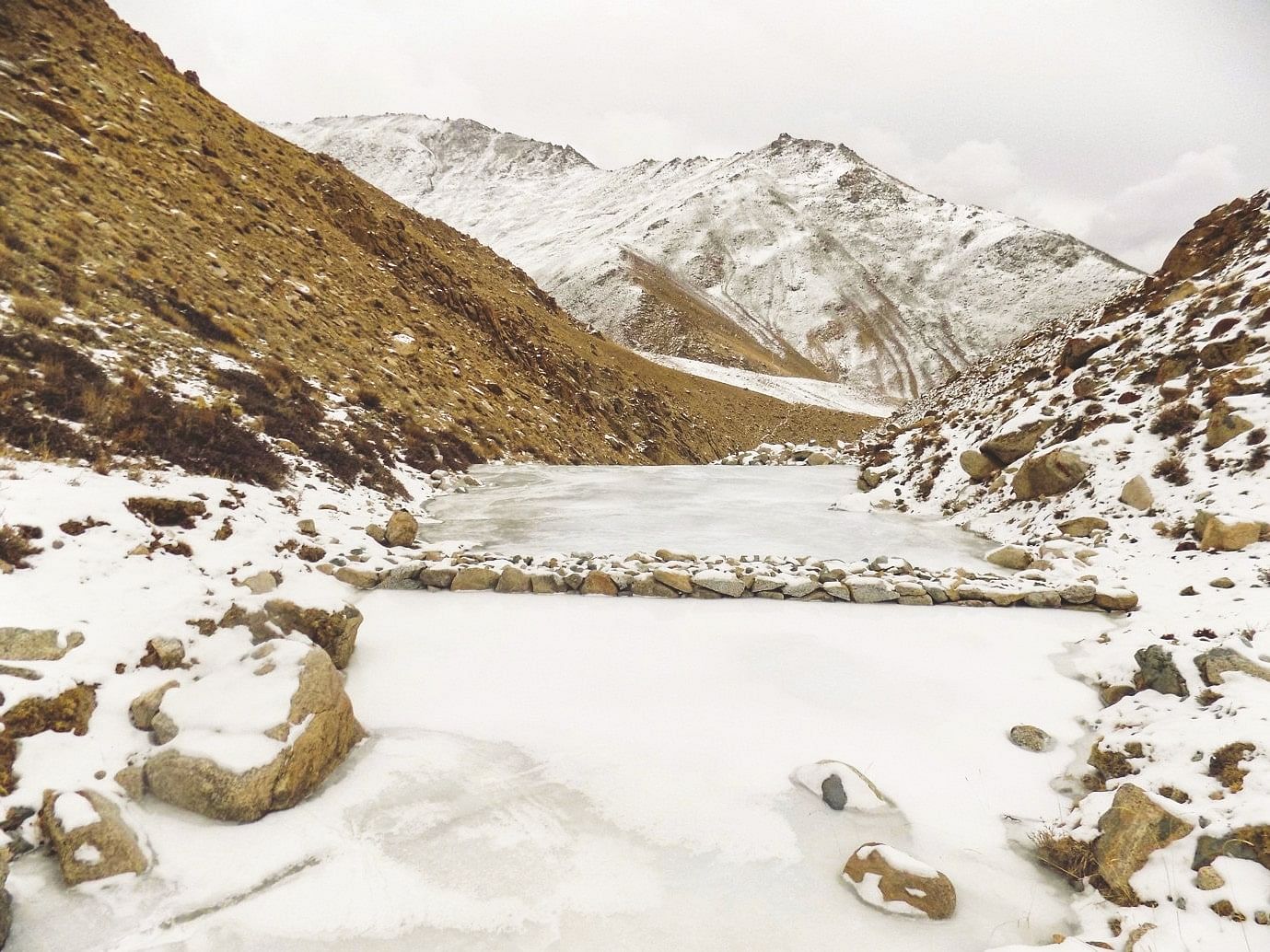
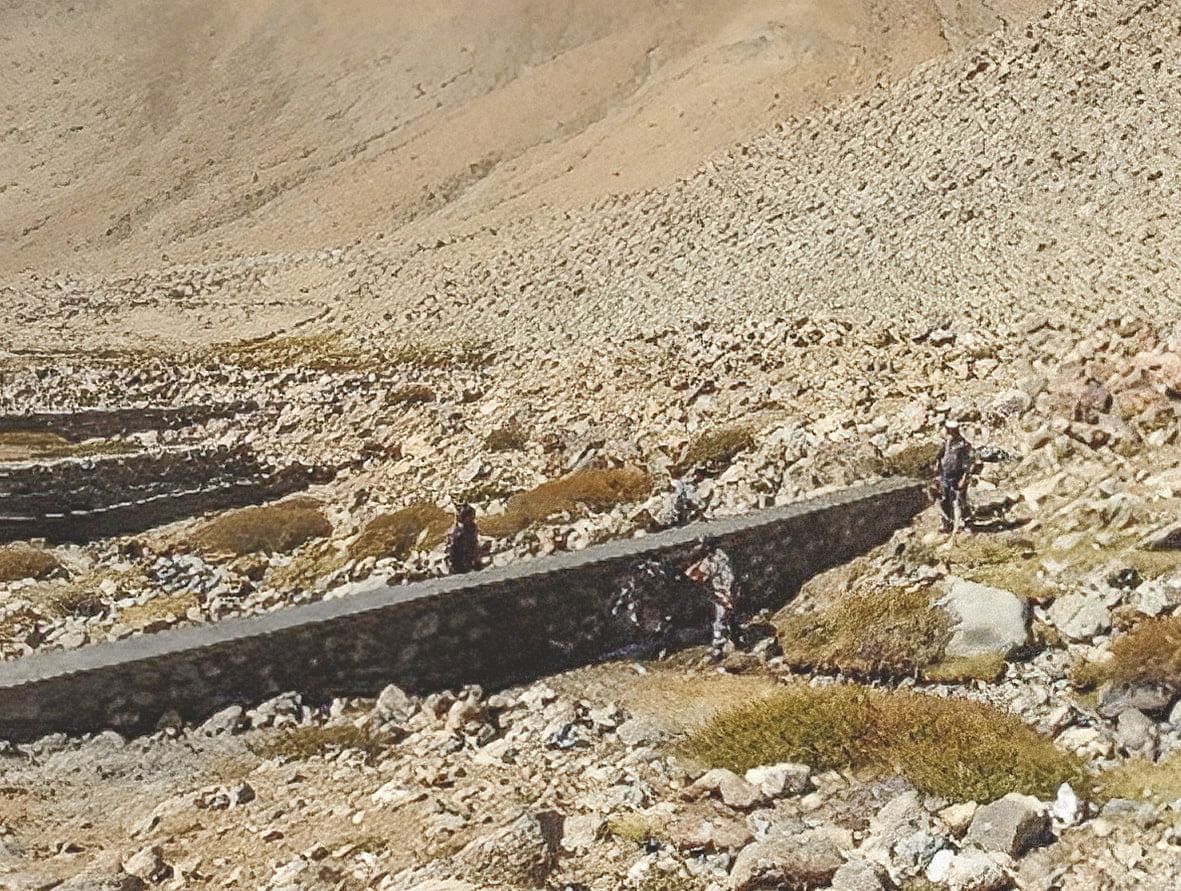


Ice mountains and ice falls involve diverting a stream through a pipe to a shaded area, and then spraying the water over a cliff, causing it to freeze instantly.
The cascade reservoir is popular in Ladakh, with 17 villages adopting it after a successful experiment in Mudh, Himachal Pradesh. According to Gyatso, they are the most cost-effective, built by villagers using only local and sustainable materials. The maximum any structure has cost is Rs 1 lakh.
“The community participates in everything. We even now have ice climbing competitions every year [on] artificial structures,” explained Tiku, who has helmed stupa work in over 100 villages in six years. He is currently collaborating with teams in the Andes for Chile and Peru, and in Switzerland, building artificial ice structures and stupas.
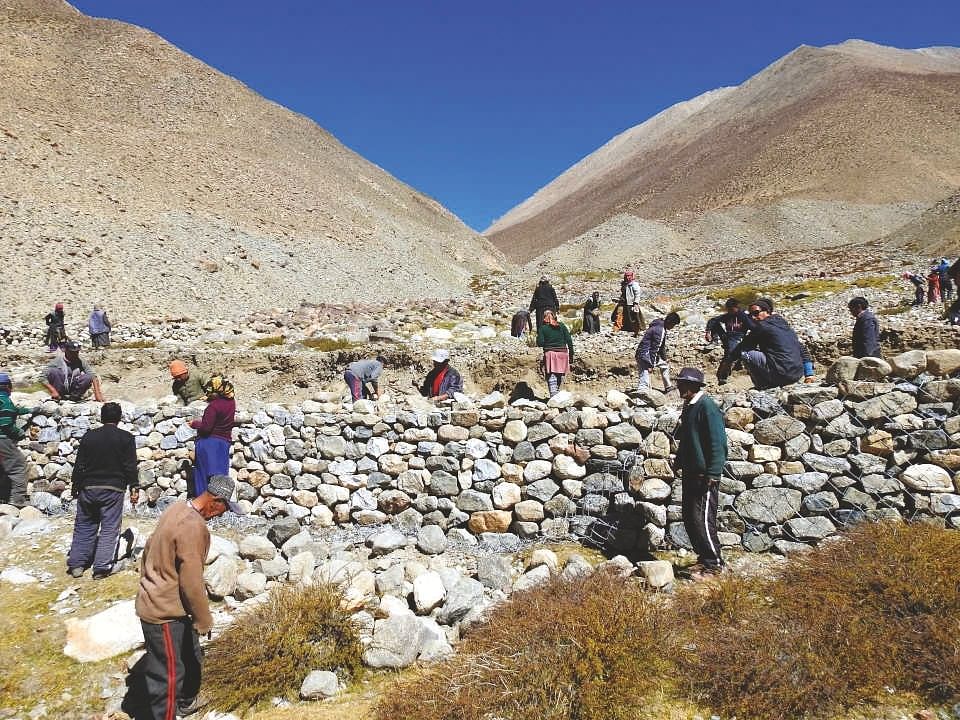
While most of the ice in these artificial reservoirs are expected to melt in April and May, and become obsolete by June due to river flow, some sustain themselves to the next year. Even if all the ice melts, the structure underneath remains, and the building of the reservoir commences again next November as temperatures drop enough to freeze water.
But this will not remain the case forever.
Fight against a warming world
In an ever-warming world, glaciers, both artificial and natural, are under serious threat. And the engineers know that. Many of the artificial glaciers built by Norphel in the 1980s and 1990s have been washed away.
“Artificial glaciers can be built only as long as natural glaciers exist,” said Tiku. As natural glaciers retreat further, so will artificial ones. “We need to build innovative projects.”
For example, engineers are considering spraying snow layers on natural glaciers to prevent black soot (which accelerates melting) from settling on them. The Ice Stupa project is also collaborating with engineers in Switzerland of Glaciers Alive to try the same method.
Many are trying to hit two birds with one stone — glacial lakes in the Himalayan region are known to be at high risk of deadly glacial lake outburst floods, considering the high seismicity in the region. While lake water is drained to prevent overflowing, it is also being diverted to an artificial glacier downstream.
But local communities are aware that it doesn’t end at just water management. There are other measures being taken to mitigate warming and preserve the fragile ecosystem.
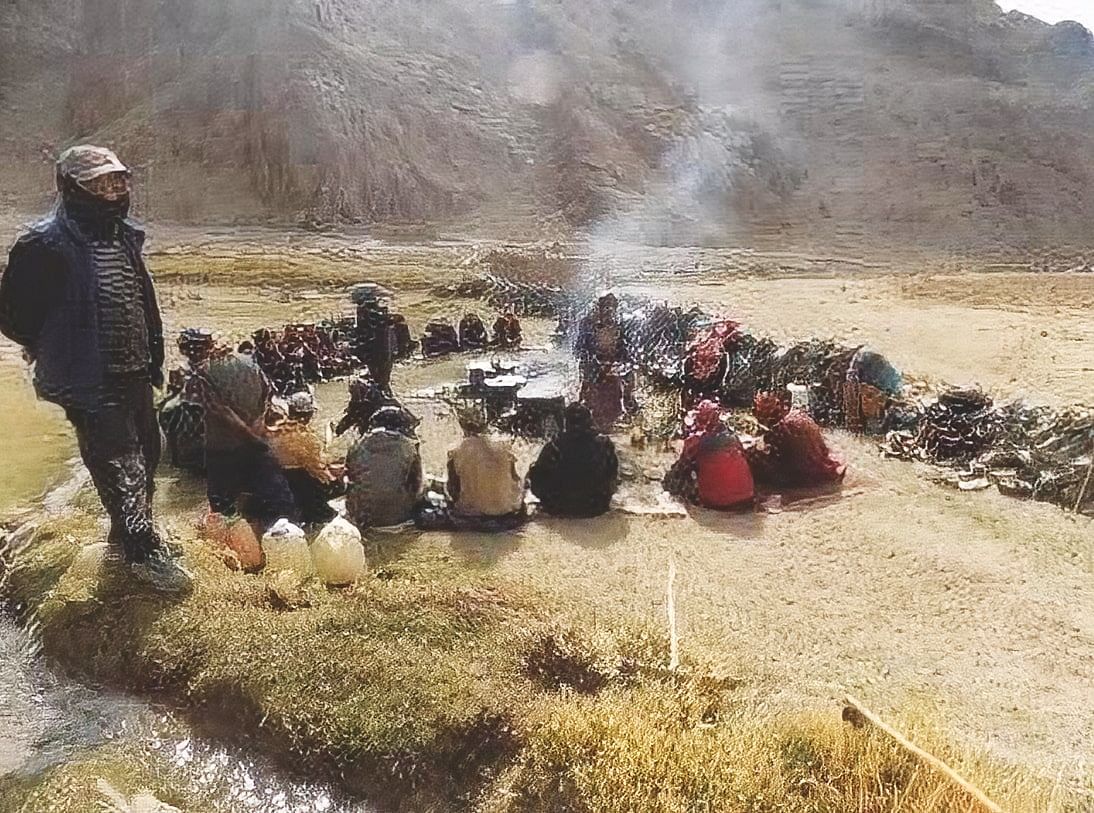
Back in 2017, a group of Ladakhi students returning to Leh to reform their home region built and established Wangchuk’s SECMOL campus. Tiku likes to describe this campus with all its building as being “carbon negative”—not only does it not consume any form of fuel other than solar, it even provides energy to neighbouring buildings. The structures are also built sustainably, utilising local materials. Discarded plastic bottles filled with water act as heat sink during the day and release heat at night. There is no cement or fossil fuel involved, and the pioneering campus was constructed with low-cost techniques.
Using earth and naturally occurring soil to build structures offers many advantages. Earth homes remain insulated to a comfortable 20°C irrespective of temperature outside. They also are more suited to sustain local weather and climate conditions.
“Structures built with cement crumble easily, especially in this high seismic zone. However, there are several castles and monasteries built centuries ago that are structurally large and still standing,” explained Tiku. But these too are not adopted in a widespread manner due to the association of earthen built homes with poverty.
It’s a high-stakes innovation race to counter the devastation that climate change can wreak.
“Glaciers are retreating higher up, and we can build artificial ones only when we have the time to address current problems immediately and easily. But even if we do that, unfortunately, the climate is warming so fast we have to keep innovating all the time,” said Gyatso.
(Edited by Prashant)
News Related-
Anurag Kashyap unveils teaser of ‘Kastoori’
-
Shehar Lakhot: Meet The Intriguing Characters Of The Upcoming Noir Crime Drama
-
Watch: 'My name is VVS Laxman...': When Ishan Kishan gave wrong answers to right questions
-
Tennis-Sabalenka, Rybakina to open new season in Brisbane
-
Sikandar Raza Makes History For Zimbabwe With Hattrick A Day After Punjab Kings Retain Him- WATCH
-
Delayed Barapullah work yet to begin despite land transfer
-
Army called in to help in tunnel rescue operation
-
FIR against Redbird aviation school for non-cooperation, obstructing DGCA officials in probe
-
IPL 2024 Auction: Why Gujarat Titans allowed Hardik Pandya to join Mumbai Indians? GT explain
-
From puff sleeves to sustainable designs: Top 5 bridal fashion trends redefining elegance and style for brides-to-be
-
The Judge behind China's financial reckoning
-
Arshdeep Singh & Axar Patel Out, Avesh Khan & Washington Sundar IN? India's Likely Playing XI For 3rd T20I
-
Horoscope Today, November 28, 2023: Check here Astrological prediction for all zodiac signs
-
'Gurdwaras are...': US Sikh body on Indian envoy's heckling by Khalistani backers
